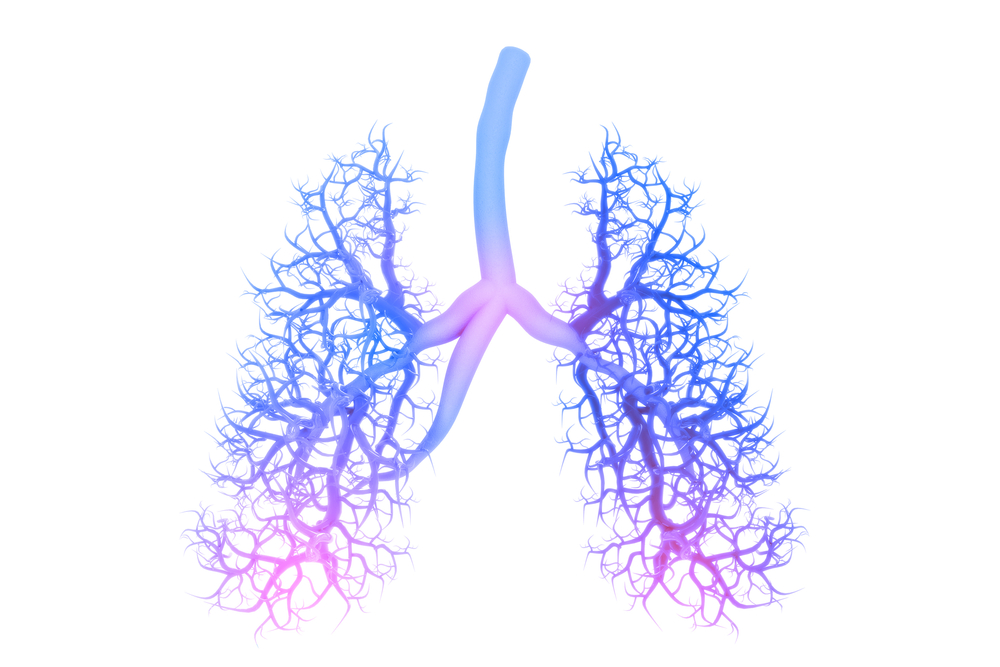Inhibiting Key Protein May Ease Lung Scarring in Systemic Scleroderma, Study Suggests

Inhibiting a protein known as KLHL42 may ease lung fibrosis (scarring) associated with systemic scleroderma (SSc), according to a recent study.
The findings were published in an article, “Kelch-like protein 42 is a pro-fibrotic ubiquitin E3 ligase involved in in systemic sclerosis,” in the Journal of Biological Chemistry.
Thickening and hardening of the skin is a hallmark of scleroderma, and is caused by the excessive production of collagen (a major protein of the extracellular matrix), which can lead to the formation of scar tissue. Often, scleroderma can manifest systemically with the accumulation of scar tissue in the skin and in other organs, including the lungs.
More than 75% of SSc patients develop lung fibrosis within five years of diagnosis which causes decreased respiratory function.
A signalling protein involved in inflammatory responses, known as transforming growth factor beta (TGF-beta), plays a key role in promoting tissue scarring and inflammation in several organs, including the lungs.
Abnormal protein degradation is also involved in the molecular signalling pathways that lead to lung fibrosis. The ubiquitin proteasome system is the main mechanism controlling protein degradation. This system includes enzymes known as ubiquitin E3 ligases — proteins that recruit other enzymes for the correct functioning of the proteasome, and hence, protein degradation.
Previous research has shown that ubiquitination proteins regulate TGF-beta signalling. “E3 ligases have also shown promise as targets for chemical inhibition to reduce deleterious fibrotic signaling,” the researchers wrote.
However, the role of ubiquitin E3 ligases as regulators of scleroderma fibrotic signaling remains unclear.
In the study, a group of researchers at the University of Pittsburgh set out to identify the key components of these signalling pathways and how they may be involved in scleroderma.
For the TGF-beta signalling pathway to work correctly, a type of protein known as SMAD needs to move to the nucleus of cells where it activates certain genes and eventually promotes fibrosis.
Therefore, the researchers assessed the nuclear localization of SMAD proteins to infer the activation status of TGF-beta, with an increased nuclear localization indicating a more fibrotic response (due to increased TGF-beta activation).
They tested this system using lung fibroblasts from SSc patients. “Previous research demonstrated SSc cell cultures have increased TGF-[beta]/SMAD signaling, and exhibit a strongly pro-fibrotic phenotype [characteristics],” the researchers wrote.
The team decreased the levels of different types of E3 ligases and assessed which one(s) would lower the amount of SMAD proteins in the nucleus. This would indicate a decrease in TGF-beta pro-fibrotic signalling.
They observed that decreasing the levels of a ubiquitin E3 ligase called Kelch-like protein 42 (KLHL42) lowered the nuclear localization and activation of SMAD proteins and decreased the levels of pro-fibrotic proteins, such as fibronectin. This suggested that KLHL42 may help promote fibrosis.
E3 ligases target proteins for degradation by adding a tag, known as ubiquitin, to them. The researchers identified the important proteins that KLHL42 targeted for degradation by determining which proteins had lower amounts of this tag attached when KLHL42 levels decreased.
They identified the protein phosphatase 2A regulatory subunit epsilon (PPP2R5e) as a target of KLHL42 for degradation. Lowering the levels of PPP2R5e promoted pro-fibrotic signalling, supporting the hypothesis that KLHL42-mediated degradation promotes fibrosis in the context of scleroderma.
Overall, these results suggest that KLHL42 is a mediator of fibrotic signalling in scleroderma “through the regulation of PPP2R5e ubiquitination and stability.”
“We propose that future studies could investigate whether chemical inhibition of KLHL42 may ameliorate pro-fibrotic signaling in SSc,” the researchers said.






